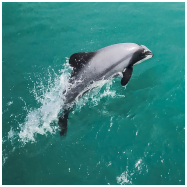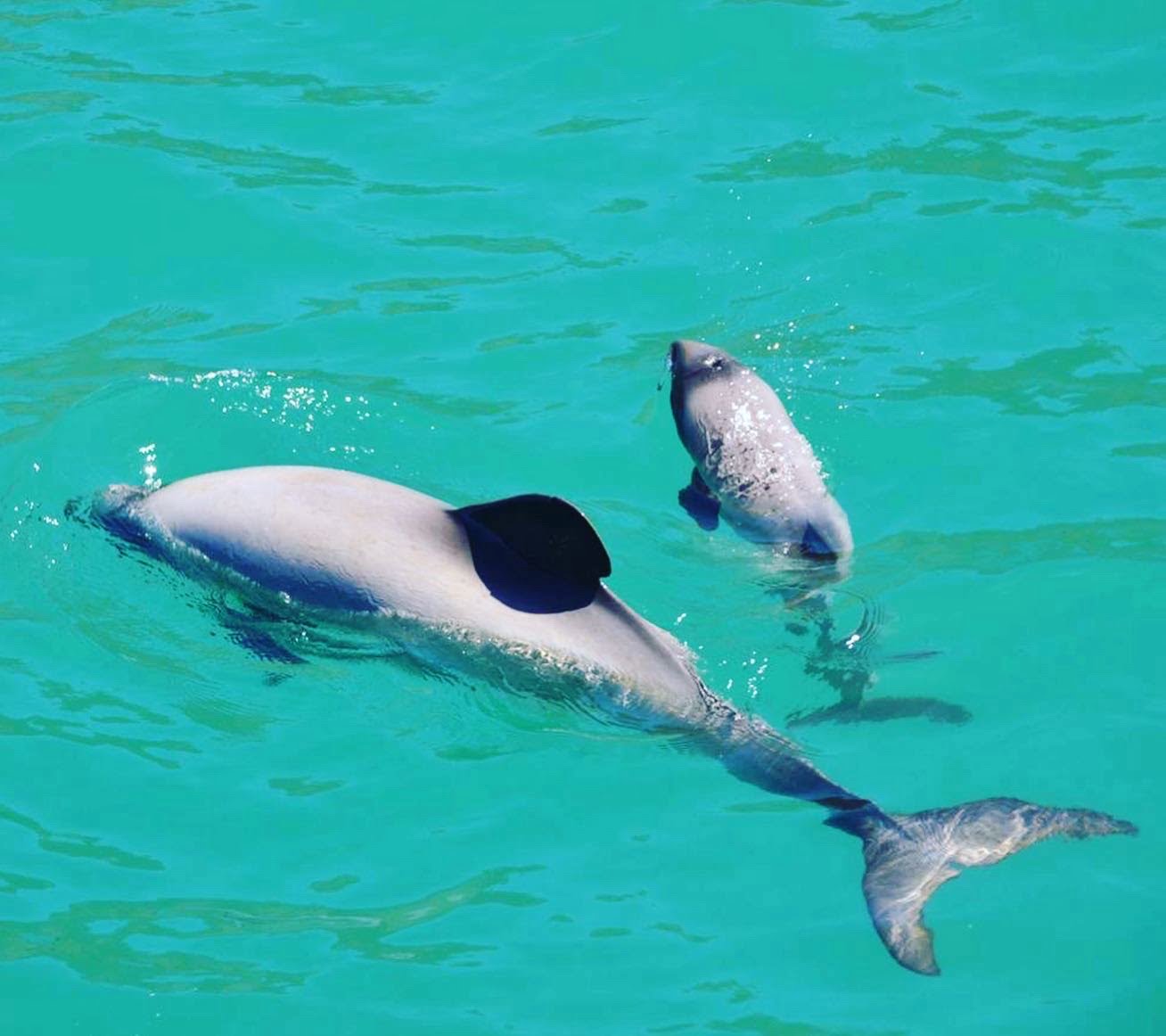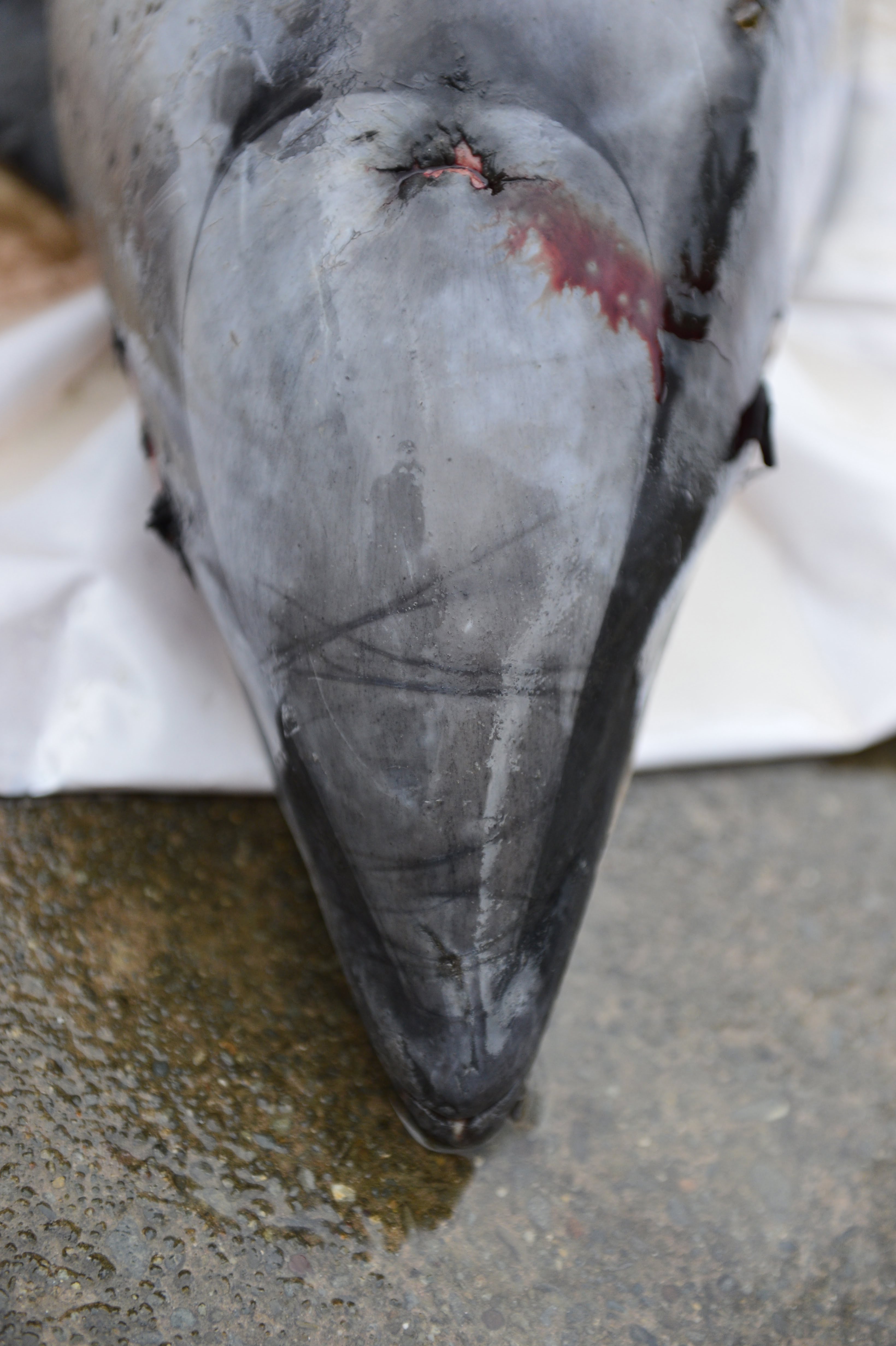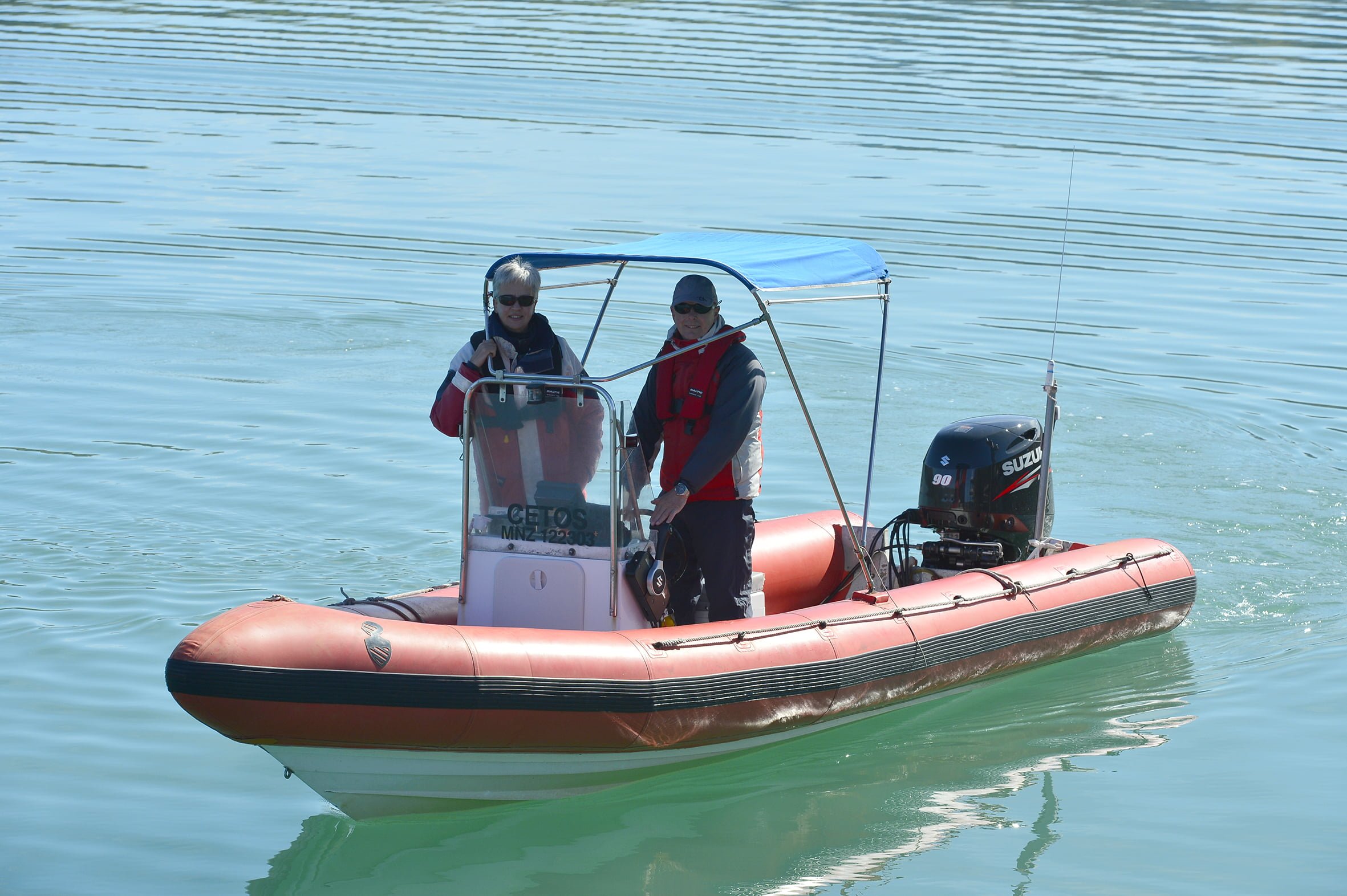
In a recent announcement the government has confirmed that up to 20 Hector’s dolphins can be caught and drowned in nets around Banks Peninsula before any further action is taken. That number increases to 49 if you include the rest of the East and South Coasts of the South Island.
Most people are very surprised to hear that one dolphin a week can be killed in fishing nets in ‘Fishing related mortality limits’. And especially considering there is a Marine Mammal ‘Sanctuary’ at Banks Peninsula.
Quite apart from the fact that this is a very ‘bad look’ for New Zealand, we wanted to analyse and discuss the science behind this decision.

A Hector’s dolphin mother and calf in Akaroa Harbour
How did we get here?
Hector’s dolphins (Upokohue) are NZ’s own native dolphins. They are a ‘nationally vulnerable species’ with the population hovering around 15,000. For reference there are about 68,000 kiwi (birds) in NZ.
The government through MPI (ministry for primary industries) has been consulting with interested parties on a ‘Threat Management Plan’ (TMP). We reviewed the TMP here.
To cut a long story short, the aim is to have the dolphins recover to 90% of their previous numbers (80% around Banks Peninsula). It has no goals for the West Coast.
So why has MPI decided to allow any dolphins to be caught at all? It wants to allow inshore fishing to continue. In a nod to conservation they also said the goal is to “reduce bycatch to zero over time.”
How did they arrive at 20 dolphins at Banks Peninsula; is it the right number?
We wanted to dive into the background science here. The plan is to get back to 80% of the historic population total number ‘over time’. Using a desktop risk model, MPI have concluded that even with 20 dolphin deaths a year, this can happen.
Here are the main issues and questions.
1. Why is 80% the right recovery goal and what was the historic number of dolphins?
2. There is no timeline for recovery so it’s not a realistic goal.
3. It takes no account of other threats to the population.
Below we look at these three areas:
1. Population discussion and ‘recovery’ to 80%
What is the historical number of dolphins? You need that number because you can’t achieve 80% of it without being very clear of what you are aiming for.
An estimate of the total number of Hector’s dolphins in 1970 by Prof Liz Slooten of the University of Otago is 50,000 to 70,000. Today it’s about 15,000. The fishing related mortality rate over the 70s and 80s was much higher than it is today.
We were involved in the stakeholder meetings when MPI raised the question what % of the historic population should we be aiming for? Clearly 100% is the most appropriate goal but we settled on 95%. MPI then decided that 80% is a better number at Banks Peninsula. We asked MPI to explain it but they didn’t respond. We can only assume that it’s because there are more dolphins here, then more can be sacrificed? This is an important % because it is related to the overall allowable kill rate.
Let’s say the historic population was 4x that of today, it means the estimated 2500 around Banks Peninsula today need to recover to (80%) of 10000. That’s 8,000. Note there are other estimates putting today’s dolphin population at 3000-6000 around Banks Peninsula, if that’s the case then we’d be aiming for say 14,000 dolphins to reach the goal. More research is needed to confirm today’s numbers)
2. Timelines
At the rate we are going, it will take hundreds of years (and more likely never) to get back to the original population size. This is completely unrealistic. For any conservation management you would expect some solid progress within 20 years. The NZ Marine Mammals Protection Act requires recovery from threatened to non-threatened as soon as practicable, and in any case within 20 years. The approach taken by MPI will take several hundred years to result in recovery, at best. In addition MPI hasn’t set any interim goals or measures.
Another issue is that the whole system relies on fishers reporting dolphin catches as observers are not present on most boats and the camera systems aren’t currently on all boats. Fishers have reported dolphin deaths in the past few years and we just have to hope they continue to do so with the stakes higher now.
3. Other threats
The basic idea of a ‘bycatch quota’ is that if you reduce the dolphin population there will be more food available to them, so the remaining dolphins will breed and survive better (less competition for food).
One major issue is that fish populations have reduced significantly due to overfishing. Eg: In the early 80s there was a vast population of red cod in Akaroa Harbour and now there are very few. If you remove the fish the dolphins eat, as well as the dolphins themselves, then there will be no reduction in the competition among dolphins for those fish. Therefore, the breeding and survival of the dolphins will not increase.
There has also been no assessment of other impacts like climate change, toxoplasmosis (a nasty little virus distributed through cat poo) and other impacts. Any additional dolphin deaths, due to other causes such as toxo, need to come off this ‘quota’. Much more needs to be known about toxo, and before we know it you cannot allow years of fishing by-catch in the interim. If we’ve agreed that 20 deaths is the right number for recovery then shouldn’t that also include all human related deaths like toxo and other impacts like reduction in their food sources?
Where to from here?
We don’t think the science is robust enough for the minister to have approved the fishing-related mortality rate. The big picture is that MPI are not setting themselves any targets that are meaningful from a conservation point of view, or measurable from a scientific point of view.
And in breaking news, the USA agrees NZ is not doing enough to protect dolphins. The US Court of International Trade has banned the import of fish caught in nets off the west coast of the North Island to help protect Maui dolphins. This decision also impacts in-shore fishers around Banks Peninsula who export to the US. They now have to prove where fish were caught and that’s tricky since NZ does not have a formal tracking system in place.
This shows our protection frameworks are not up to scratch and is a black eye for NZ’s reputation globally.
With the added pressure on the population of non-fishing related mortality, its clear we can do a lot better than this to help Hector’s dolphins.
As of December 2022, MPI has put the plan into place. They will continue to assess the annual dolphin kills as best they can, based on reporting from the fishing sector. If the annual kill rate reaches 21 around Banks Peninsula, then the minister will take further fishing restrictions. Any annual number below that means any recommendations are purely voluntary for fishers.
In the meantime conservation groups will continue to advocate for a zero kill rate, and for a recovery to 100% of historic limits (though that seems like a real challenge given the lack of food, net bycatch and toxoplasmosis).

Net marks on a dead Hector’s dolphin
How can you help?
We desperately need further information on the dolphins. In particular more information on:
- The threat from toxoplasmosis
- An accurate count of dolphins around Banks Peninsula.
- Accurate information on how many dolphins are being caught in nets
- A scientific design for the full protection of dolphins from set and trawl nets.
All of this takes resources.
We recommend donations to the NZ Whale and Dolphin Trust to carry out this valuable work.
They are currently fundraising for a new research boat and need $90,000.
Please give a little here.

